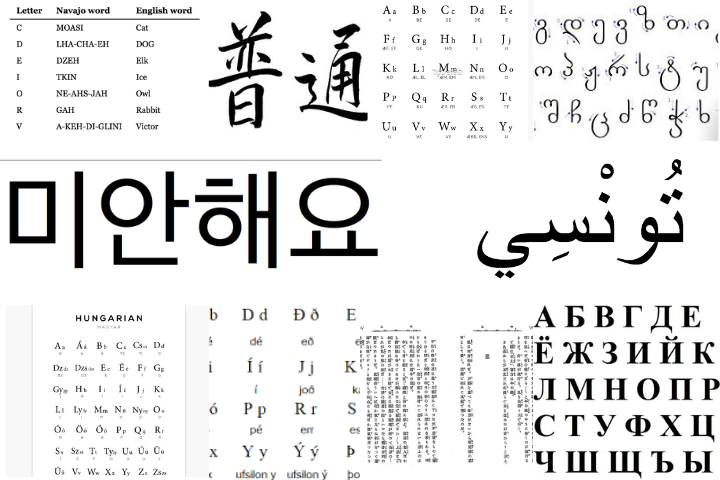Learning a new language can feel like embarking on a grand adventure, but some languages are undeniably tougher than others. The top 10 toughest languages in the world are not just difficult—they’re downright challenging, even for seasoned language learners. Whether it’s mastering intricate writing systems or grappling with complex grammar rules, these languages push learners to their limits. So, what makes a language difficult, and why do some seem nearly impossible to master? In this article, we’ll explore the most difficult languages to learn and break down the challenges they present, helping you understand which languages might require the most effort and patience to learn.
What Makes a Language Difficult?
Learning a new language is exciting, but some languages are harder to master than others. It’s not just about memorizing new words. Every language has its own rules and patterns that can make learning more challenging.
Grammar
Grammar is one of the main reasons a language can be tough. For example, in English, we follow a simple word order. “I eat pizza” has a clear meaning, while “Pizza eat I” doesn’t make sense. But some languages, like Mandarin Chinese, change word order in different ways. Others, like Russian, have more rules about how words end. These differences can make grammar tricky for beginners.
Pronunciation
Pronunciation adds another layer of difficulty. Arabic has sounds that English doesn’t use, making it tough for English speakers to pronounce correctly. Mandarin is especially hard because it uses tones. A word might sound the same, but if you change the tone, it could mean something completely different. Getting the tone right is a big challenge.
Writing Systems
Writing systems can be one of the hardest parts of learning a new language. English uses the alphabet, but other languages use different systems. Japanese has three scripts: Hiragana, Katakana, and Kanji, each with its own rules. Korean uses Hangul, which is easier to learn, but it still requires memorization. Learning these new writing systems takes time and effort, adding to the challenge.
Cultural Context
Language is also tied to culture. In Japanese, how you speak changes depending on who you’re talking to. For example, you’d speak differently to a friend than you would to a boss. Russian also has a complex system of politeness in speech. Understanding these cultural rules is crucial, which makes learning these languages even harder.
Understanding Language Difficulty for English Speakers
Learning a new language can be fun, but some languages are harder than others. If you speak English, you may wonder why certain languages are so tough. Let’s break it down.
English is easier than many other languages. We don’t have tricky grammar rules or complex sentence structures. But when you try languages like Mandarin, Arabic, or Russian, things change. These languages are very different from English. That’s what makes them tough.
The Language Difficulty Scale
Experts use something called the language difficulty scale to measure how hard a language is. The Foreign Service Institute (FSI) made this scale. It shows how long it takes an English speaker to learn a language. Some languages, like Spanish and French, are easier. Others, like Mandarin and Arabic, are much harder.
Challenges for English Speakers
Let’s look at Mandarin. It uses tones. This means the same word can sound different based on how you say it. English speakers don’t use tones. That makes Mandarin hard to learn. It also uses characters instead of an alphabet. You need to learn many symbols to read and write.
Next is Arabic. The Arabic script is written from right to left. It has sounds that English doesn’t have. These sounds can be hard for English speakers. There are also many dialects of Arabic. The version you learn may not be used everywhere.
Russian is another tough one. It uses a different alphabet called Cyrillic. It looks similar to English, but some letters are different. You also need to learn case declensions. This means words change based on their role in a sentence. This can make Russian hard to speak and understand.
Why Are Some Languages Harder?
So, why are these languages hard for English speakers? They are different. They have new sounds, writing systems, and rules. But don’t worry—it’s not impossible. With practice, you can learn even the hardest languages.
Top 10 Toughest Languages in the World
Learning a new language is like opening the door to an entirely new world. But let’s be honest—some languages make you feel like you’re locked out, staring at that door, wondering if it’ll ever open. From strange sounds to completely different alphabets, some languages are a real challenge for English speakers. So, what are the top 10 toughest languages in the world? Let’s dive in and explore.

1. Mandarin Chinese
Mandarin is often considered the king of challenging languages for beginners. It uses tones, meaning the pitch or intonation can change the meaning of a word. Imagine saying “ma” and it could mean mother, horse, or scold—depending on how you say it! Plus, Mandarin doesn’t use an alphabet, but characters. You’ll need to learn thousands of them just to read a simple sentence. It’s no wonder it’s one of the most difficult languages to learn in the world.
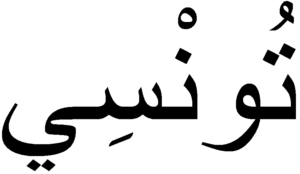
2. Arabic
Arabic might be one of the most difficult languages to learn for English speakers, especially because it’s written from right to left. And if that’s not enough, Arabic has sounds that don’t exist in English, making pronunciation tricky. On top of that, the language comes with a range of dialects—what’s spoken in one country might be completely different in another. But it’s not just about the alphabet or sounds; Arabic also requires understanding cultural nuances, which can make or break your fluency.
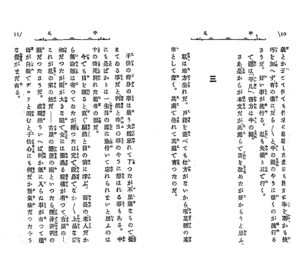
3. Japanese
Japanese is often a surprise for those thinking it’s just “like Chinese but easier.” Not quite. With its three writing systems—Hiragana, Katakana, and Kanji—learning to read and write in Japanese takes some serious effort. Plus, sentence structure in Japanese doesn’t follow the Subject-Verb-Object pattern like English, which can confuse beginners. Throw in honorifics (different levels of politeness) and you’ve got yourself a challenge. But once you master it, the language opens up an entire world of culture and media.

4. Korean
If you’re thinking of learning Korean, you’ll encounter its Hangul writing system. Hangul is actually pretty straightforward compared to others. But the sentence structure can be hard to wrap your head around. For example, the verb typically comes at the end. Then, there’s formality—different words are used depending on who you’re talking to, which can get tricky in real-world conversations.

5. Russian
Russian may look similar to English in some ways, but the Cyrillic alphabet is a whole new beast to tackle. Some letters look the same, but they sound totally different. Add in case declensions (where words change based on their role in a sentence) and tricky pronunciation, and you’ve got a real challenge. Russian is one of those languages where the more you learn, the more complex it becomes.

6. Hungarian
Hungarian is one of those languages that can make your head spin if you’re used to English grammar. It has complex grammar rules and vocabulary that are unlike anything in English. The sentence structure is different too, which can feel like you’re putting together a puzzle each time you speak. It’s definitely not one of the most difficult languages to learn in the world, but it’s up there for sure.

7. Finnish
Finnish is another language that might make you scratch your head. The vowel harmony rule, where vowels within a word must harmonize with each other, is a tough concept for English speakers. Plus, its grammar includes cases (like Russian), and words change depending on their function. It’s not a language you can learn overnight, but if you’ve got patience, you can master it!
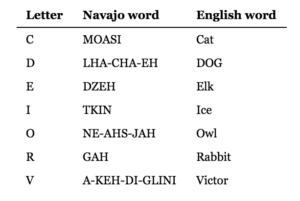
8. Navajo
Navajo is one of the hardest languages to learn because of its tonal nature and sentence structure. The way words are put together in Navajo is unlike anything you might encounter in English. There’s also the fact that the language is complex in terms of meaning and syntax, and sometimes words can shift based on context.
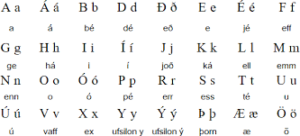
9. Icelandic
Icelandic might look easy to read if you’re familiar with English or other Germanic languages, but it’s not as simple as it seems. Icelandic has ancient linguistic features that have remained unchanged for centuries. This means you’ll need to get used to words that have long-forgotten roots. The grammar rules are also more complex than English, making it one of the top 10 toughest languages in the world.
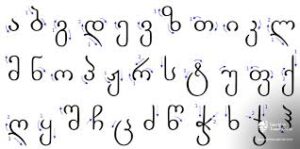
10. Georgian
Georgian is known for its unique alphabet—it looks like something out of a code book. But beyond that, the language has complicated consonant clusters that make pronunciation difficult. It’s a fun language to learn, but you’ll definitely need to put in the effort to understand it.
Which Languages Are Most Difficult for Beginners?
Learning a new language can be hard, especially when it’s one of the top 10 toughest languages in the world. Some languages are tougher than others for English speakers. For example, Mandarin Chinese is tough because it uses tones, and the writing system is full of characters instead of an alphabet. Arabic is tricky with its right-to-left script and sounds not found in English. Russian is tough due to the Cyrillic alphabet and tricky grammar rules like case declensions. Finnish and Hungarian are also difficult with their complex grammar rules. These are the most difficult languages to learn because they need extra effort and time. But, with patience, you can master even the most challenging languages to learn for beginners.
Language Difficulty and Proficiency Tests
Learning a hard language can be tough. But if you take it step by step, it will get easier. This guide will help you understand how to learn one of the toughest languages and how to use language proficiency tests to track your progress.
Step 1: Know the Language Difficulty
Before you start learning, it’s important to know how hard the language is. The language difficulty scale shows how long it takes for an English speaker to learn a new language. Mandarin Chinese and Arabic are very hard. But languages like Spanish or French are easier.
Step 2: Choose a Language Test
Once you pick a language, choose the right language proficiency test. These tests show how well you know the language. For example, if you’re learning Japanese, you can take the JLPT. If you’re learning French, try the DELF test. There are also tests like TOEFL for English or IELTS.
Step 3: Understand the Levels
Most tests have levels. These go from beginner to advanced. If you are learning one of the top toughest languages, start at the beginner level. As you improve, you can move to higher levels. For example, Russian and Arabic need you to learn their unique alphabets and sounds first.
Step 4: Practice Often
To do well on the test, you need to practice a lot. Practice every day. If you are learning a difficult language, it’s important to spend time on it. You can take classes, use apps, or talk to native speakers. The more you practice, the easier the language will become.
Step 5: Take the Test
When you feel ready, take the test. Don’t worry if you don’t pass the first time. The test will show you what you need to work on. For example, if you are learning Georgian, you will need to know its unique alphabet. Use the test results to improve. Keep practicing, and you will get better.
Step 6: Celebrate Your Progress
When you pass a level, celebrate! Each level shows how much you’ve learned. Whether it’s understanding a sentence in Navajo or passing the Mandarin test, you should be proud.
Conclusion
Learning a new language can feel like a big challenge, especially when it comes to the top 10 toughest languages in the world. Languages like Mandarin, Arabic, and Russian are some of the most difficult languages to learn in the world. But don’t worry! These languages might be tricky at first, but with patience and practice, you can master them. The language difficulty scale helps show how hard a language is, but it’s not impossible. If you are learning challenging languages for beginners, remember to break it down into small steps. Choose a language that excites you, and don’t stress about which languages are hardest to learn. With the right mindset and effort, you’ll soon be on your way to speaking one of the top languages for language proficiency tests. Keep going, and you’ll get there!
